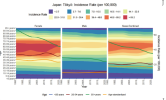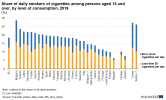Sly Saint
Senior Member (Voting Rights)
A new AI-powered study reveals that cases of rheumatoid arthritis (RA) are on the rise worldwide.
The autoimmune disease affected 17.9 million people in 2021, a 13% increase since 1990, according to researchers.
And while people older than 55 have the highest rates of RA, the age of onset has been trending downward since 2015 – with an increasing proportion of patients aged 20 to 54.
Rheumatoid arthritis occurs when a person’s immune system attacks tissue lining their joints causing inflammation, pain, stiffness and potential damage.
For the study, researchers analyzed rheumatoid arthritis data from 953 locations between 1980 and 2021. They used an AI program to look at global rates, the number of years people suffer from disability and mortality trends.
The death rate for RA fell more than 32% between 1980 and 2021, according to the results. But the number of years patients lived with disability or lost due to early death nearly doubled between 1990 and 2021.
The researchers predict rheumatoid arthritis will continue to increase unless steps are taken to prevent it or treat existing cases.
They say these results emphasize “the need for dietary adjustments, accessible medical policies, and innovative treatments such as cell therapy,” Higher case rates of rheumatoid arthritis were seen in Western Europe and North America, and lower rates in Africa. Only Japan showed a decline.
Source paper: Annals of the Rheumatic Diseases


